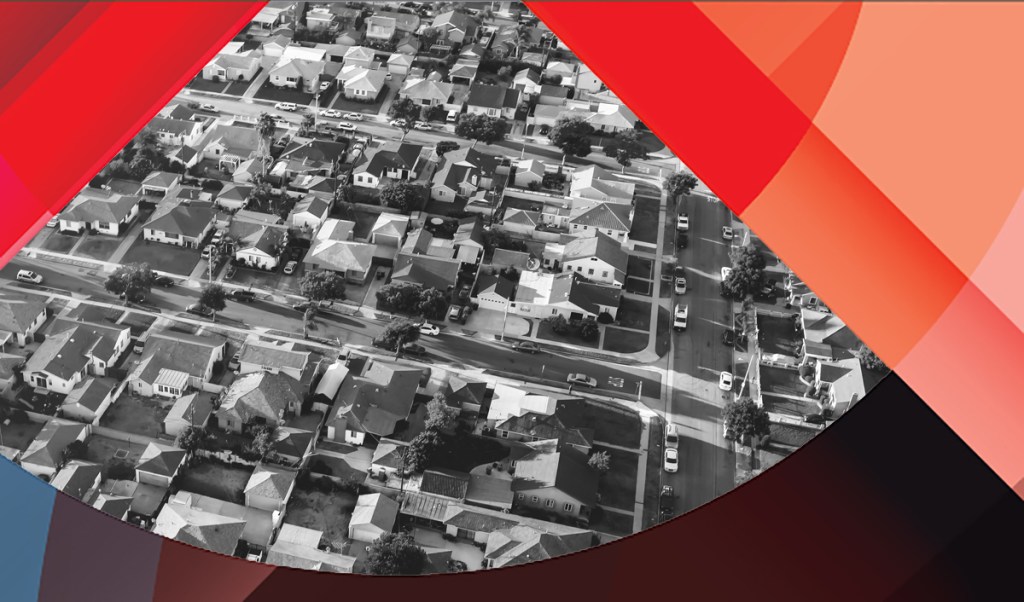
The housing industry has a long and complicated history with racial equity. Though discriminatory policies are now illegal, more corrective action is needed to achieve equality in housing. The housing industry is thriving with low rates and high demand, but low rates of minority homeownership demonstrate the current system is not serving everyone.
The Minority Homeownership Gap
Centuries of compounded inequities and mistreatment of people of color have contributed to a widening wealth gap, only made worse by the COVID-19 pandemic. When it comes to homeownership, the Black community faces many obstacles. Black homeownership has never reached 50% and has seen a continued decrease in net new Black households since the Great Recession.
Black families were hit particularly hard by the 2008 housing crisis and have had the slowest recovery rate amongst all racial groups. Right before the housing collapse, Black homeownership rates were historically high — peaking around 49.7% according to the Census Bureau — making the effects of the downturn devastating to the Black community. Today, the current homeownership gap between Black and white households is wider than before the Fair Housing Act was passed in 1968.
Over 10 years following the housing crisis, the average homeownership rate, according to data from the U.S. Census Bureau, was 64.4%. However, the homeownership rate among Black Americans was only 42%, far below average and significantly below white Americans, who reported a 73.3% homeownership rate. Asian and Hispanic populations also fell, but much closer to average, coming in at 57.7% and 47.5%, respectively.
Fast-forward to the current day; the COVID-19 pandemic has further revealed the inequities embedded into our health and financial systems. COVID-19 has presented many challenges, but it also offers an opportunity for equitable recovery. Building on lessons of the past, the mortgage industry, policymakers and community organizations can minimize the gap in minority homeownership, creating a more inclusive future.
Opportunities for inclusivity
1. Access to credit
Credit tightens with every downturn, disproportionately affecting Hispanic and Black communities. It’s essential to monitor risk carefully — particularly during times of economic uncertainty — but more work can be done to define more clearly what is “risky.” Unfortunately, risk has historically been conflated with race through policies such as redlining, and the effects still linger today. That is why when credit tightening trends emerge, it’s essential to pay attention to potential disproportionate effects.
Credit scores play a crucial role in access to mortgage loans, and the low credit scores for Black and Hispanic households are a sign innovation is needed to provide more holistic credit scoring.
The Equal Credit Opportunity Act was passed in 1974, which “prohibits creditors from discriminating against credit applicants on the basis of race, color, religion, national origin, sex, marital status, [and] age.”
This should have eliminated bias in credit scoring, but more needs to be done to make credit scoring a more inclusive system. Too many minorities in America are “credit invisible” because they rely mainly on cash or do not have sufficient account histories within the mainstream financial system. FICO reported, in the U.S., roughly 28 million consumers have insufficient data in their credit bureau file to meet the minimum criteria for calculating a FICO Score, and “another 25 million consumers have no credit bureau file at all.”
Many of these people could be deemed credit ready with a more robust credit file, which could be made possible with the inclusion of monthly utility or rent payments and checking account data. Alternative data options can increase minority representation in credit scoring, making mortgage loans more accessible and affordable.
However, it will be critical to analyze potential bias embedded into the old and new credit scoring systems to ensure the outcome is a more inclusive and equitable system.
2. Cost of credit
Loan-level price adjustments at the Government Sponsored Enterprises are a housing crisis-era policy. LLPAs are risk-based adjustments based primarily on credit score and loan-to-value ratio and are most costly for borrowers with 10% or less of a down payment. Borrowers incur these fees while having credit enhancement from private mortgage insurance, not fully recognizing the benefit of PMI. Reducing or eliminating loan-level price adjustments would reduce mortgage costs for borrowers of color.
Expanding other low- and moderate- income programs would also increase minority homeownership. Examples include Fannie Mae and Freddie Mac’s HomeReady and Home Possible programs, which target borrowers with lower incomes and offer reduced LLPAs and PMI coverage. HomeReady and Home Possible are currently available for borrowers at or below 80% average median income. An increase in AMI limits could widen the eligible population and help more borrowers of color, especially in high-cost areas.
Special purpose credit programs made available through the Equal Credit Opportunity Act also foster many opportunities for innovation that expand homeownership in the Black community with intentionality, making up for years of exclusion.
3. Housing supply
Housing supply also plays an essential role in minority homeownership. Driven by low inventory, home prices are up 15.8% on average year-over- year across the U.S., according to a report from the National Association of Realtors. Equitable housing financing is essential to address the Black homeownership gap, but the high demand for housing will keep prices elevated until we have more supply. Working on supply issues will improve affordability and make homeownership more attainable. Many steps need to be taken to address the housing supply shortage, but one recommendation is to address local zoning policies. In 1917, the Supreme Court’s decision in Buchanan v. Warley declared racially biased zoning unconstitutional, but economic zoning followed.
Economic zoning is achieved in part by single- family zoning, which keeps people segregated by class and race. According to a Brookings report, “[O]n roughly 75% of land in most cities today, it is illegal to build anything except single-family detached houses.” More inclusive zoning policies could increase the supply of affordable housing and help to reverse the impacts of long-standing segregation.
4. Low down payment mortgage options, tax credits, and down payment assistance
Making progress toward housing equality will take a continued effort in dispelling the myth that a 20% down payment is required to buy a home. Fannie Mae reported in research conducted in October 2020, “the primary barrier to homeownership for first- time homebuyers is saving money for the down payment and closing costs.” Down payment mortgage options like private mortgage insurance can help overcome this barrier by requiring as little as 3% down. However, it’s essential to recognize more targeted relief also is needed.
The Biden administration and lawmakers from both parties have proposed legislation to increase homeownership in communities of color. Some recently introduced legislation includes the “First- Time Homebuyer Act,” which calls for a $15,000 tax credit for first- time homebuyers introduced by Rep. Earl Blumenauer, D-Ore., and Rep. Jimmy Panetta, D-Calif., on April 26.
On April 23, 2021, Rep. Emanuel Cleaver, D-Mo., and Sen. Elizabeth Warren, D-Mass., announced the “American Housing and Economic Mobility Act of 2021,” which includes down payment assistance grants to first-time homebuyers living in historically redlined or segregated areas. And finally, Chairwoman Maxine Waters, D-Calif., announced the “Housing is Infrastructure Act” that was released April 14, includes $10 billion for DPA for first-time, first-generation homebuyers. These proposals and many others not listed are promising signs of a commitment to equitable housing solutions. Down payment assistance and tax credit programs are the kind of target assistance needed to uplift those left behind for too long and reduce the wealth disparity in the U.S.
Closing the minority homeownership gap
The lasting benefits of homeownership include building equity and wealth. That only happens when homeownership is affordable and sustainable, which should be a key focus with any new housing policy. There are many ideas and visions for making housing possible for all people, but it will take collaborative efforts from policymakers and the housing industry to create lasting change. And we cannot overlook the need for increased diversity in the housing industry, especially at the leadership level.
Representation is critically important, and there is no replacement for diverse perspectives that develop out of lived experiences. There is a passion within the housing industry to find equitable solutions, and more and more organizations are putting in the time and resources it’s going to take to get there. Unfortunately, no one solution will close the homeownership gap, but together we can take steps to narrow it every day.
To see the HousingWire July Magazine, click here.




